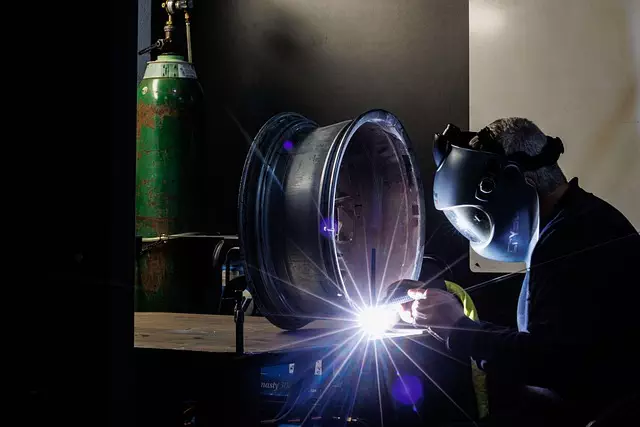Industrial ventilation systems are essential for ensuring optimal workplace air quality, protecting employee health, and meeting safety standards by controlling hazardous gases, vapours, and dust. Effective ventilation management involves understanding and strategically placing equipment like exhaust fans, supply vents, and air distribution networks. Regular energy auditing plays a crucial role in optimizing these systems, promoting sustainability, reducing costs, improving indoor environmental conditions, enhancing productivity, and upholding strict ventilation safety standards.
In today’s world, ensuring optimal workplace air quality is paramount. Industrial ventilation systems play a crucial role in maintaining healthy environments by controlling airborne contaminants and enhancing worker comfort. This article explores the significance of industrial ventilation systems and workplace air quality management. We delve into the critical aspect of ventilation safety standards and compliance, emphasizing its impact on employee well-being and facility operations. Additionally, we discuss comprehensive energy auditing as a strategy to optimize system performance and achieve substantial cost savings.
- Understanding Industrial Ventilation Systems and Their Role in Workplace Air Quality Management
- The Importance of Ventilation Safety Standards and Compliance
- Comprehensive Energy Auditing for Optimal Ventilation System Performance and Cost Savings
Understanding Industrial Ventilation Systems and Their Role in Workplace Air Quality Management
Industrial ventilation systems play a critical role in workplace air quality management, ensuring safe and healthy conditions for employees. These systems are designed to remove contaminated or hazardous gases, vapours, and dust from work areas, replacing them with clean, breathable air. Effective industrial ventilation not only enhances worker comfort but also mitigates risks associated with poor air quality, such as respiratory issues and chemical exposure.
Understanding the complexities of these systems is key to implementing appropriate ventilation safety standards. This includes knowing the different types of ventilation equipment, like exhaust fans, supply vents, and air distribution networks, and their optimal placement for maximum efficiency. Regular energy auditing of these systems further ensures they operate at their most efficient, thereby saving costs and promoting sustainable practices in industrial settings.
The Importance of Ventilation Safety Standards and Compliance
Comprehensive Energy Auditing for Optimal Ventilation System Performance and Cost Savings
Comprehensive energy auditing plays a pivotal role in enhancing the performance and efficiency of industrial ventilation systems. By meticulously evaluating every aspect of the workplace air quality management system, experts can identify areas where energy is being wasted. This process involves assessing the design, installation, and maintenance of the ventilation system against industry-leading safety standards. Through this audit, potential inefficiencies, such as leakages or inadequate filtration, are revealed, allowing for targeted improvements.
The benefits extend beyond immediate cost savings. Optimized ventilation not only enhances workplace air quality but also contributes to better indoor environmental conditions, thereby boosting employee productivity and well-being. Moreover, adhering to ventilation safety standards through regular auditing can help organizations avoid costly fines and legal issues. This proactive approach ensures that industrial facilities maintain a safe and healthy environment for their workers while minimizing energy consumption.


